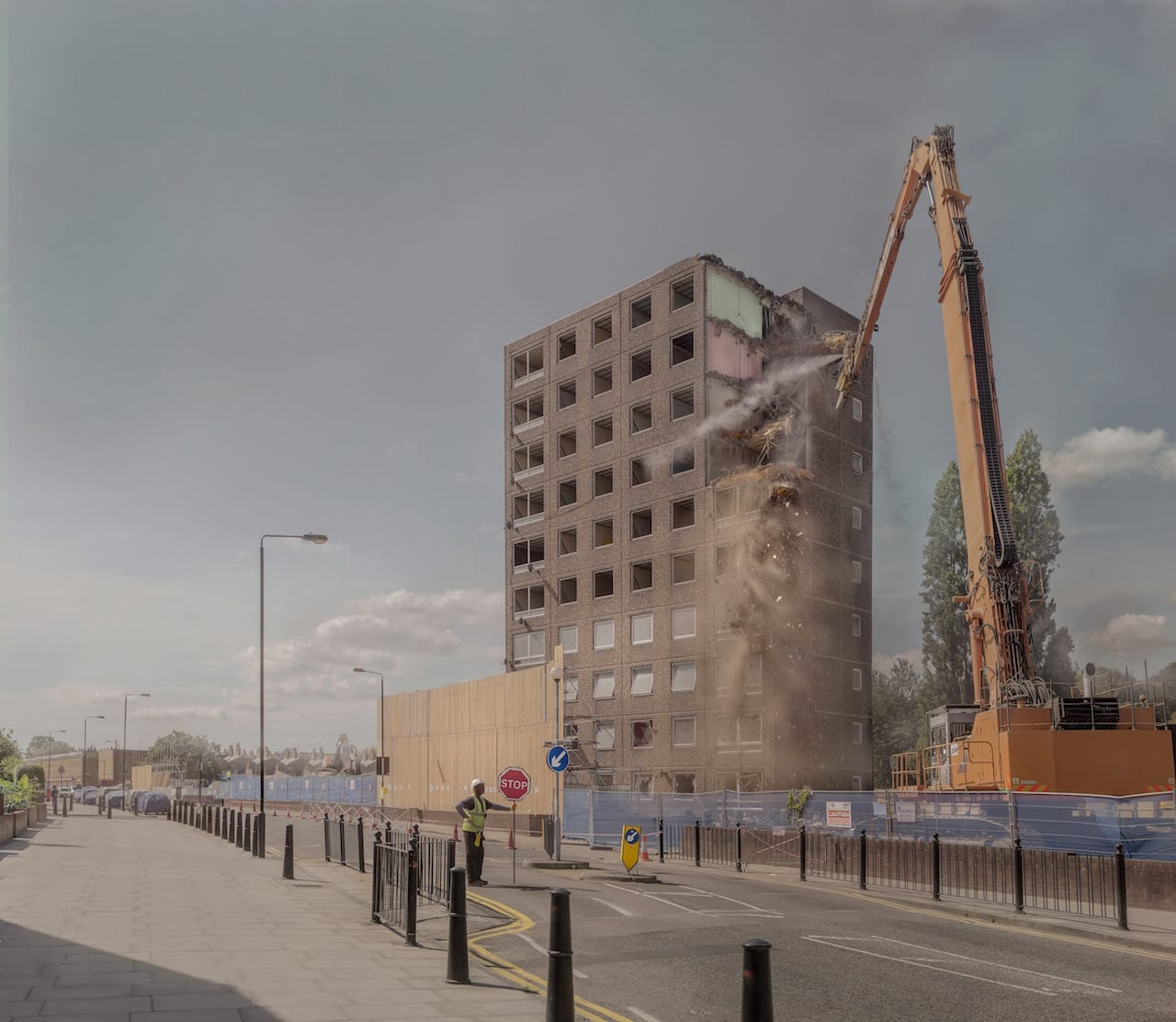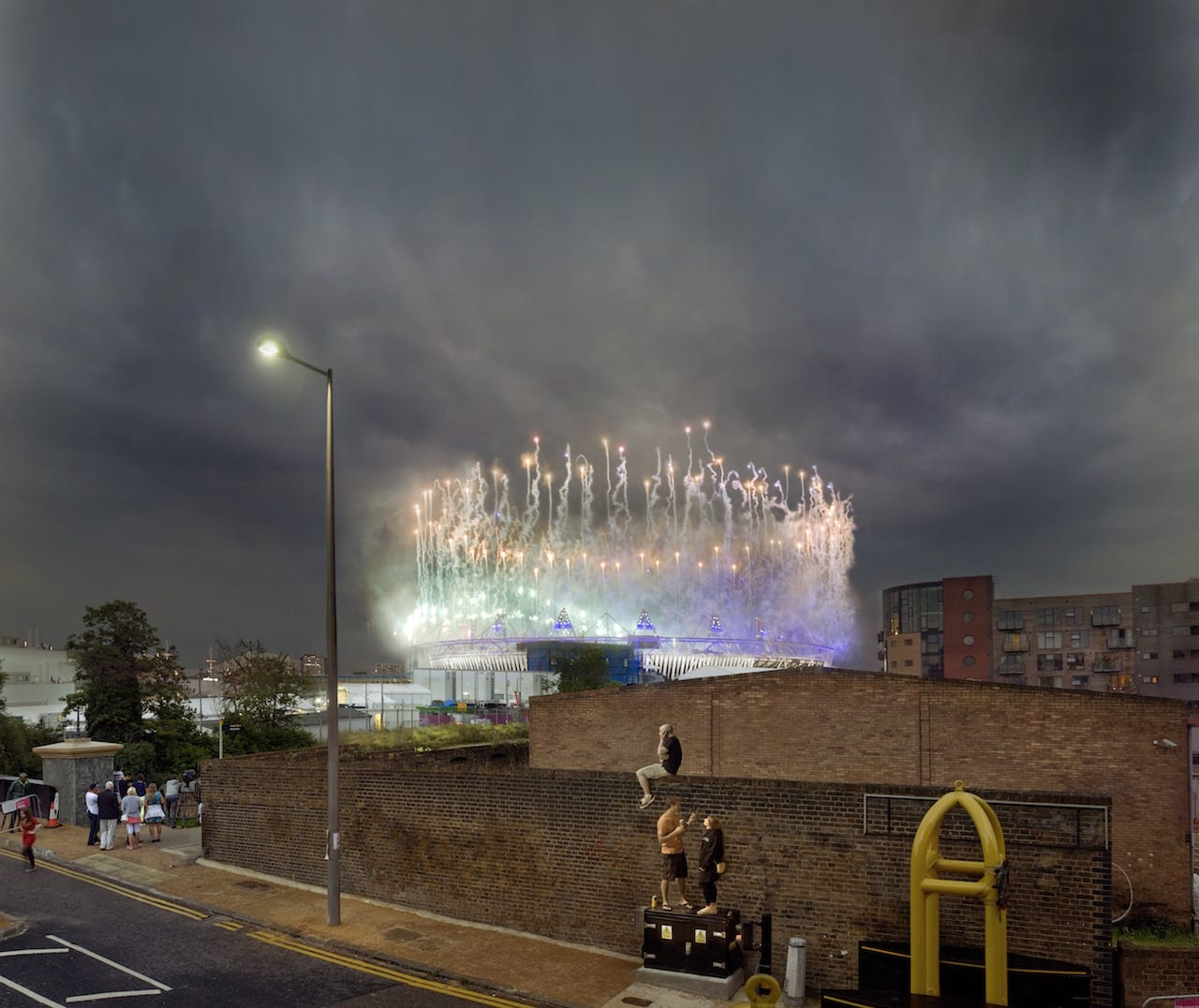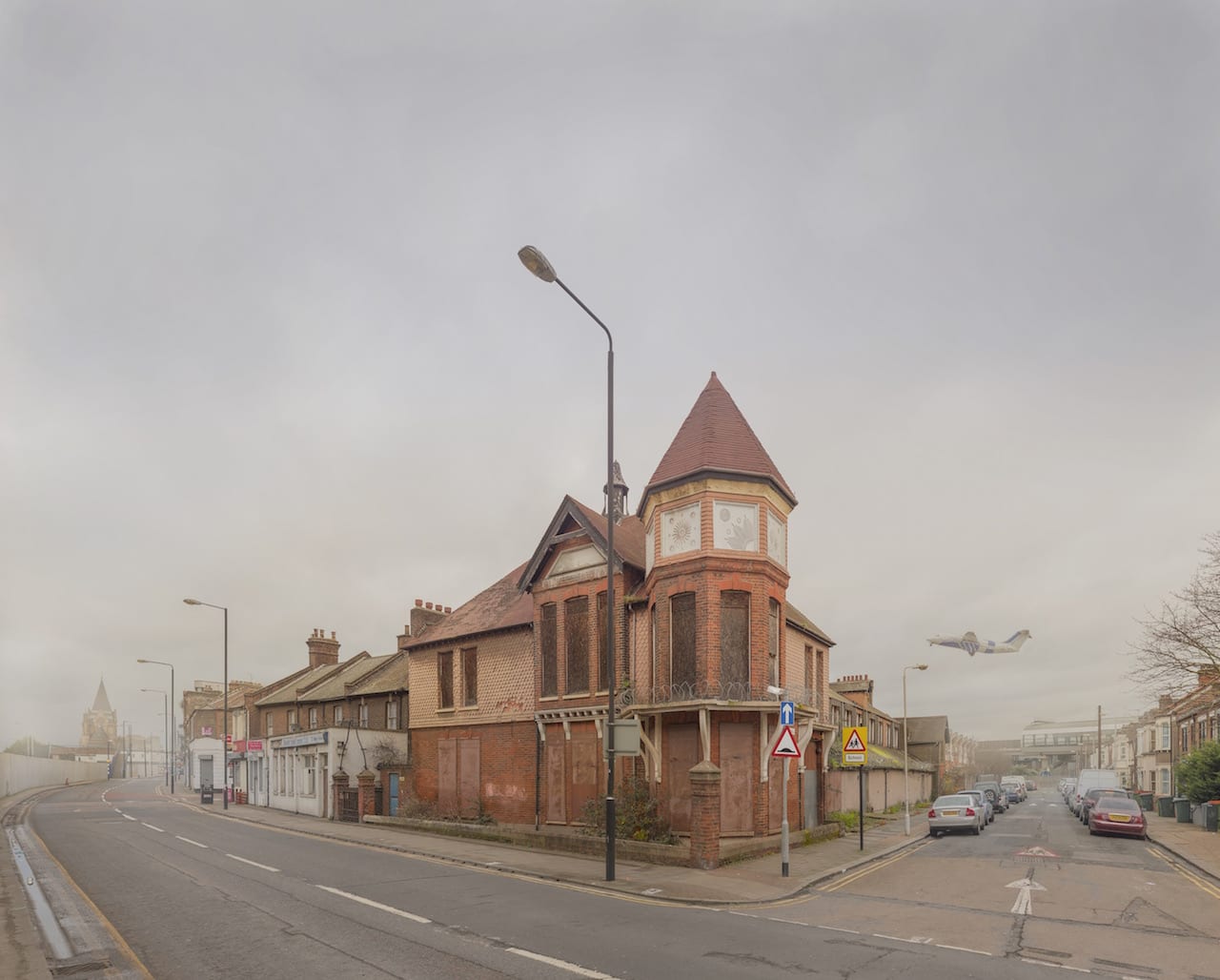“I don’t have a journalistic bone in my body,” says Chris Dorley-Brown. “I’ve never been to Kosovo. Loads of people do that really well, but I don’t have the urge or the instinct, and that’s partly why I don’t really think of myself as a professional.
“I do the odd advertising job to earn money, and I think I do it okay, but the phone isn’t ringing off the hook with jobs because I don’t put the energy into promoting myself, since I’m wandering around here all the time. I keep my overheads low and can just about get away with it.”
It’s a modest way to sum up an extraordinary body of work – more than 30 years of images, nearly all shot in London’s East End, and most photographed on the street. Some show luxury new developments, others rundown social housing. Some capture crowds of people, some empty streets.
Many are one-offs, others – such as the images in The Corners – are manipulated using Photoshop to put various passersby together on one intersection. Yet somehow Dorley- Brown has kept the same aesthetic and same sense of detachment throughout, and maybe he’s right about one thing – his work doesn’t tell obvious stories.
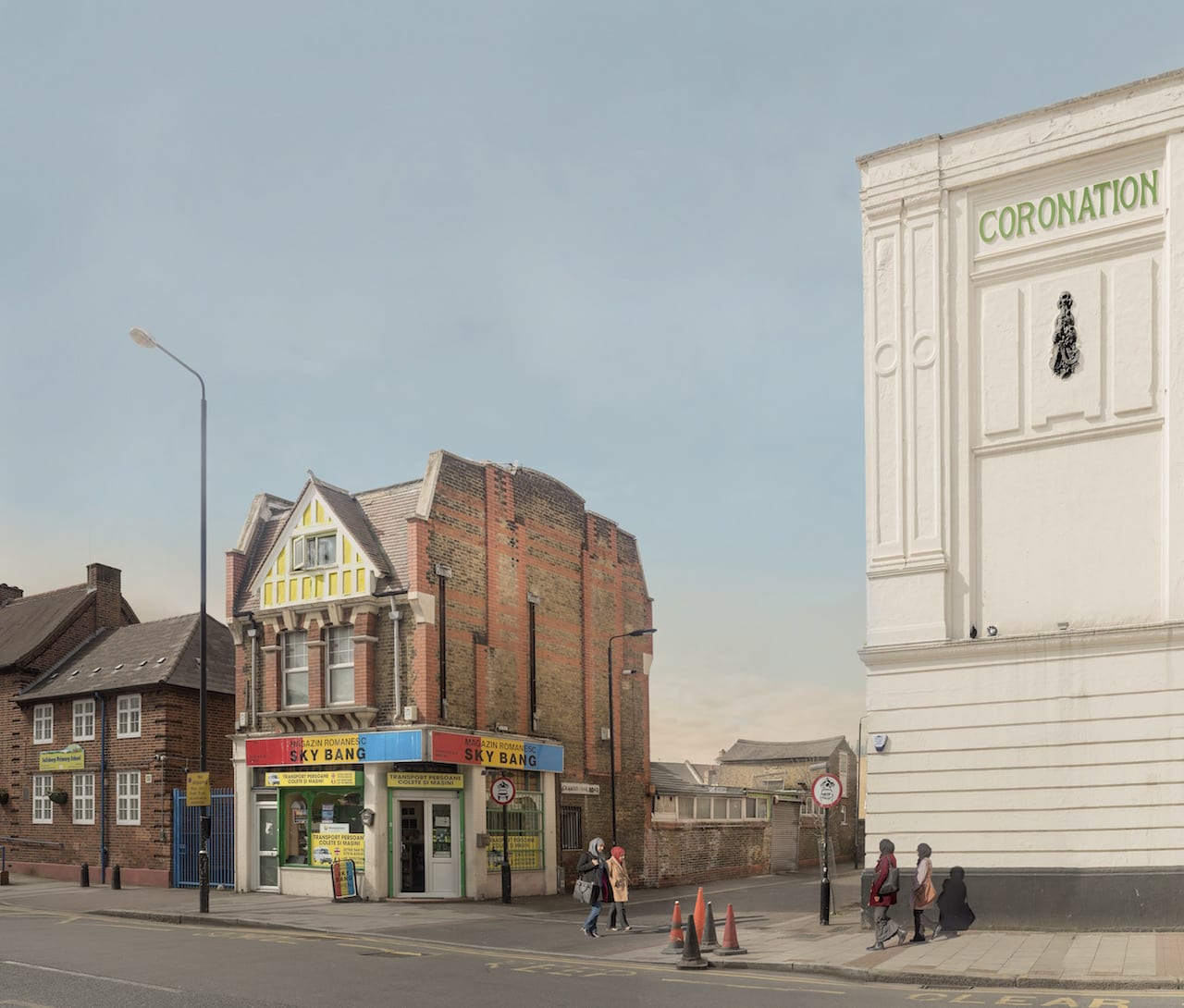
In fact, his archive doesn’t even divide up into series very easily. He has rough groupings but he’ll happily mix up the years and locations, and will often swap images in and out of these projects. “I’m not worried about that, it’s all quite arbitrary,” he says. “I see it as one thing. I just split it up into convenient chunks so it’s a bit more digestible.”
And while he’s done gallery shows and published books (he’s exhibited large-format prints at the Idea Store Whitechapel, and his book, The Longest Way Round, was nominated for awards at Arles, PhotoEspaña, Gazebook Sicily and more) he’s more interested in shooting than in how his images are used.
“Other people will decide the outcome, because I’m probably taking pictures for people who haven’t been born yet,” he says. “I don’t think they’re going to come into their own for maybe another 30 or 40 years.”
Dorley-Brown was born and raised on Britain’s south coast, but his family came from the East End, and he headed back to Hackney in 1978, as soon as he left home, aged 18. Other than a five year stint in Cambridge in the 1990s, he’s lived there ever since. He started out working on building sites, but was interested in photography from the outset, carrying around a Nikormat and photographing demolition sites in the area.
“People were looking at me like, ‘Well that’s bloody miserable!’ And I was like, ‘Yeah, but just wait.’ I had a suspicion that the longer you left them, the more interesting they would get – that they would be like a good wine.”
By 1981 he got a job at a print-finishing lab in Soho, in London’s West End, and had met photographers including Martin Parr, Brian Griffin, Jo Spence and Red Saunders. Spence “sorted him out” from some of his “teenage sexist shit”, he laughs, but Saunders proved to be his route into photography, offering him an assisting job that helped him learn his way around a plate camera.
“I stayed for a year and then I moved on,” he says. “Actually, Red told me to fuck off – he bought me a camera and said, ‘OK you’ve had enough now, go on’.”

He set himself up as an architectural photographer, something he still does now, working for builders and developers a few times a year to fund his personal work. By 1987 he was doing well enough to be commissioned by public institutions, shooting all the tower blocks in Hackney before the council started to demolish the most rundown ones. It’s a series he came back to 10 years later, rephotographing the estates from exactly the same position to see what had changed and what hadn’t.
“What’s really interesting to me [about photographs] is that they’re like a time machine,” he says. “When I go out I’m actually looking for the past, the recent past, something that’s going to set off a trigger in me like, ‘That’s the last time anyone’s going to see that.’ Sometimes it’s obvious, you’ve got the dinosaur eating the building and then it’s gone.”
When he left London, he took a break from photography to explore new media and programming, but he got back into it on his return in 1997, getting up early to shoot, location scout and process before collecting his kids from school and cooking dinner. His children are now grown, but he still prefers to work this way, leaving the house by 5.30am and shooting while the streets are quiet and the light is still good.
He’ll spend a lot of time in an area, working out exactly what he wants to photograph and the best time to do it before taking the camera along. Once he’s done all that, he says, the images have “sort of got their own mind”.
“Say I know that it’s good to be down at Ilford at five in the morning because the light’s good then, all I’ve got to do is set the alarm, grab the camera, get on the bus and go,” he explains. “Then suddenly it’s all automatic. The little voice is saying, ‘Come on, you know what to do, just go and do it.’ I’m not thinking too much. Really it runs itself.
“I don’t walk around waiting for something to happen; I always know exactly what I’m going to do. I’m after a very specific atmosphere – I can’t put it into words, but when I see it, I know. And I know that when I take the picture, I enter a kind of subconscious zone. I’ve set up the situation, I’m equipped for the moment, then I’m like, ‘OK, start.’ It’s like I’m directing the people, though of course I’m not actually talking to them. It’s a kind of madness, but I trust it.”
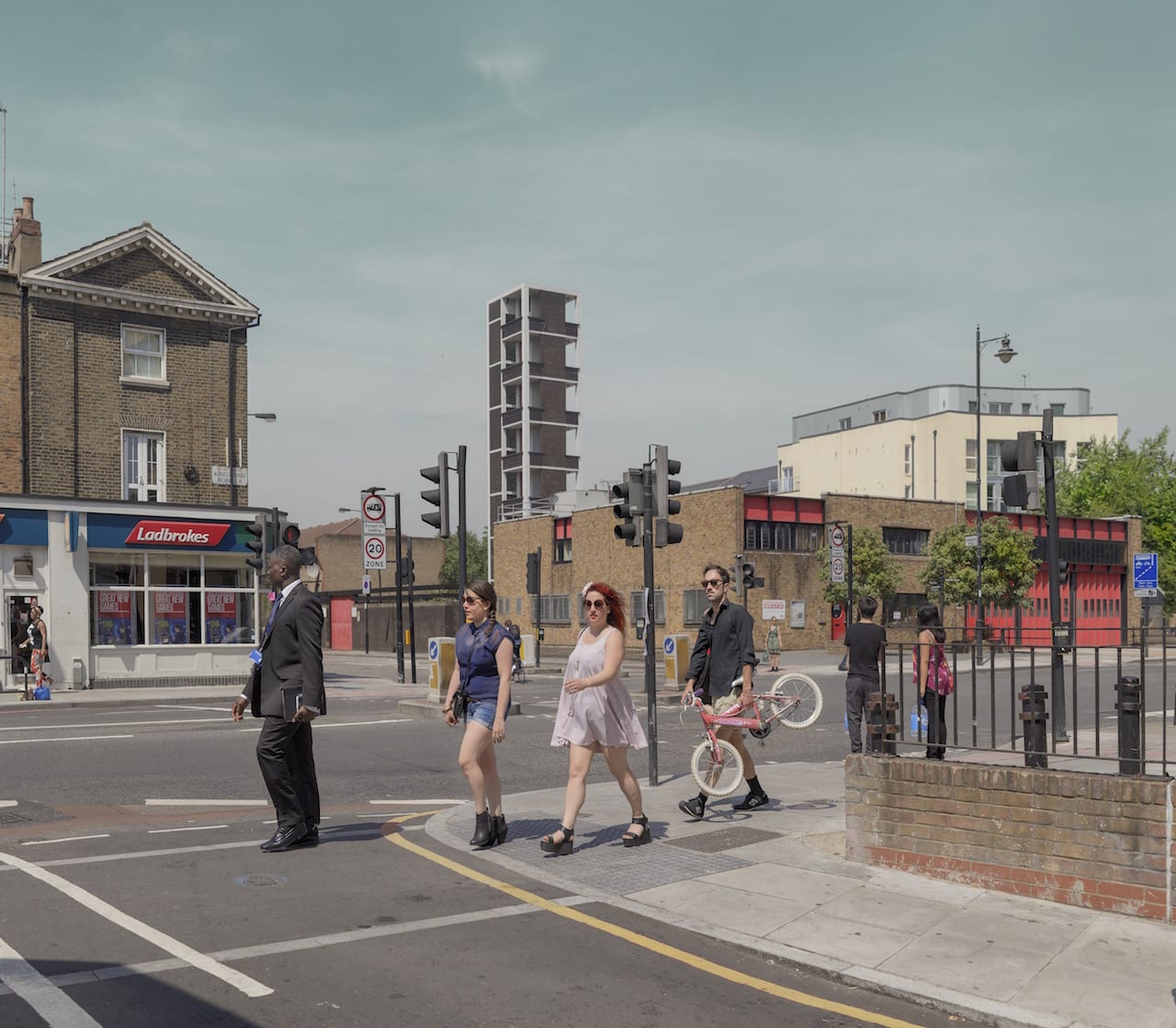
Dorley-Brown’s bookshelves are packed with histories of London; he’s often bumped into the writer and psychogeographer Iain Sinclair and admires his multifaceted, cultural take on the city. This research, plus Dorley-Brown’s own long association with London, means he can see layers of history in apparently banal scenes – the 1920s housing campaigner memorialised in the name of a block of flats, for example, or the ghost of Marx in an apartment in a former hospital. For him the individual scenes he records reflect the wider society in which they take place, its attitudes and its ideals.
Over the years he has seen many changes in Hackney – once a rundown overlooked borough, then a hipster hotspot and host to the 2012 Olympic Games. The Games brought a sudden rush of interest in his work, he says, but he’s found himself less interested in Hackney ever since, finding the borough “like a film set” these days – “too self-aware, too knowing, too hip”.
He’s moved further afield instead, exploring into Ilford, Romford, Colchester and beyond. “I’m starting to hit the coast now. I’m at Southend thinking, ‘I can’t go any further!’” he laughs. “But boroughs like Barking and Dagenham, they’re just like Hackney was 25 or 30 years ago. I feel like I’m going to get my head kicked in, and I like that.
“I can get a sourdough loaf any time of day [in Hackney now]. That’s all good, I like it. But if I’m just another photographer walking around Hackney with my sourdough loaf, there’s nothing going on here,” he adds. “I want to feel like I’m an intruder or something.”
modrex.com The Corners by Chris Dorley-Brown is published by Hoxton Mini Press, priced £30 www.hoxtonminipress.com/products/the-corners


